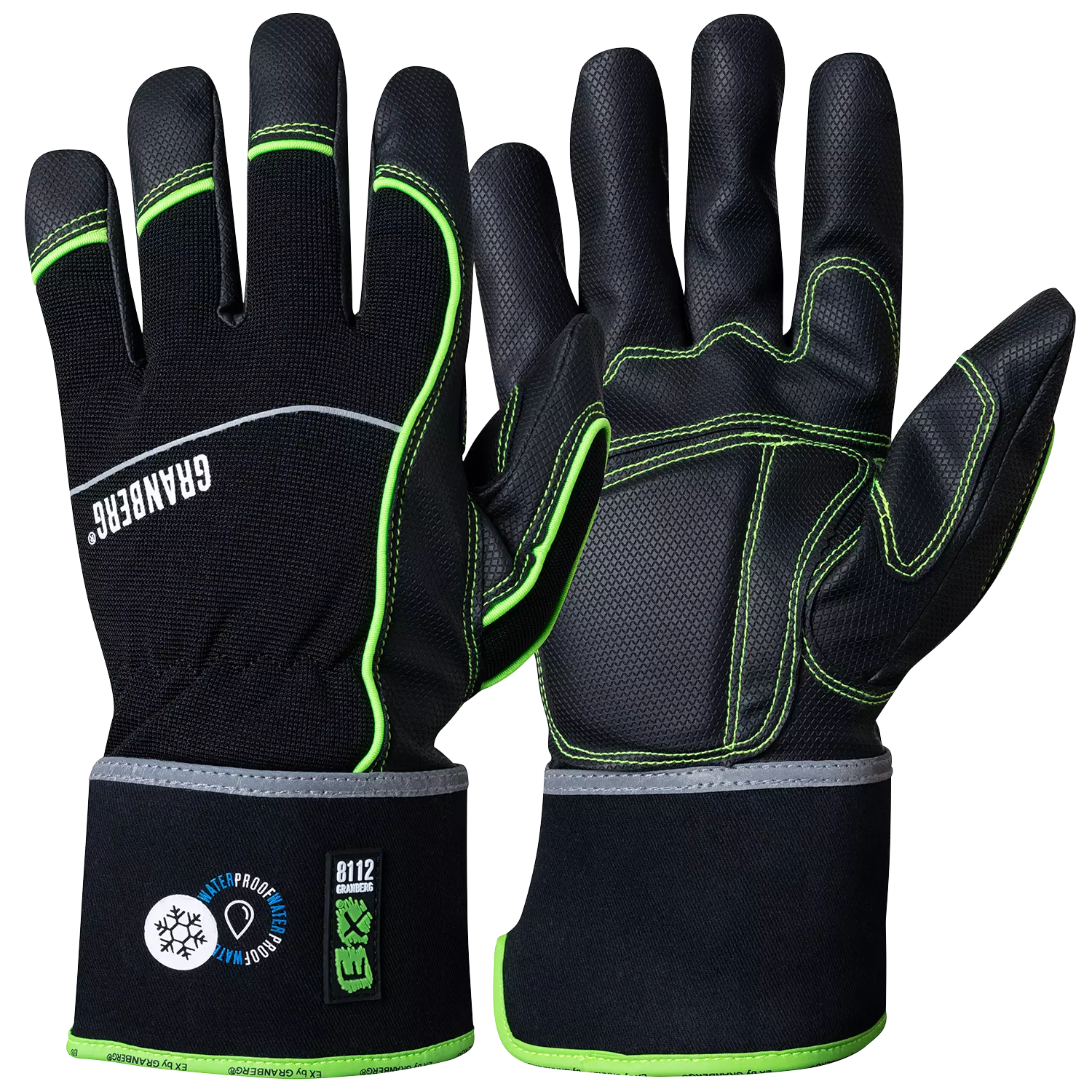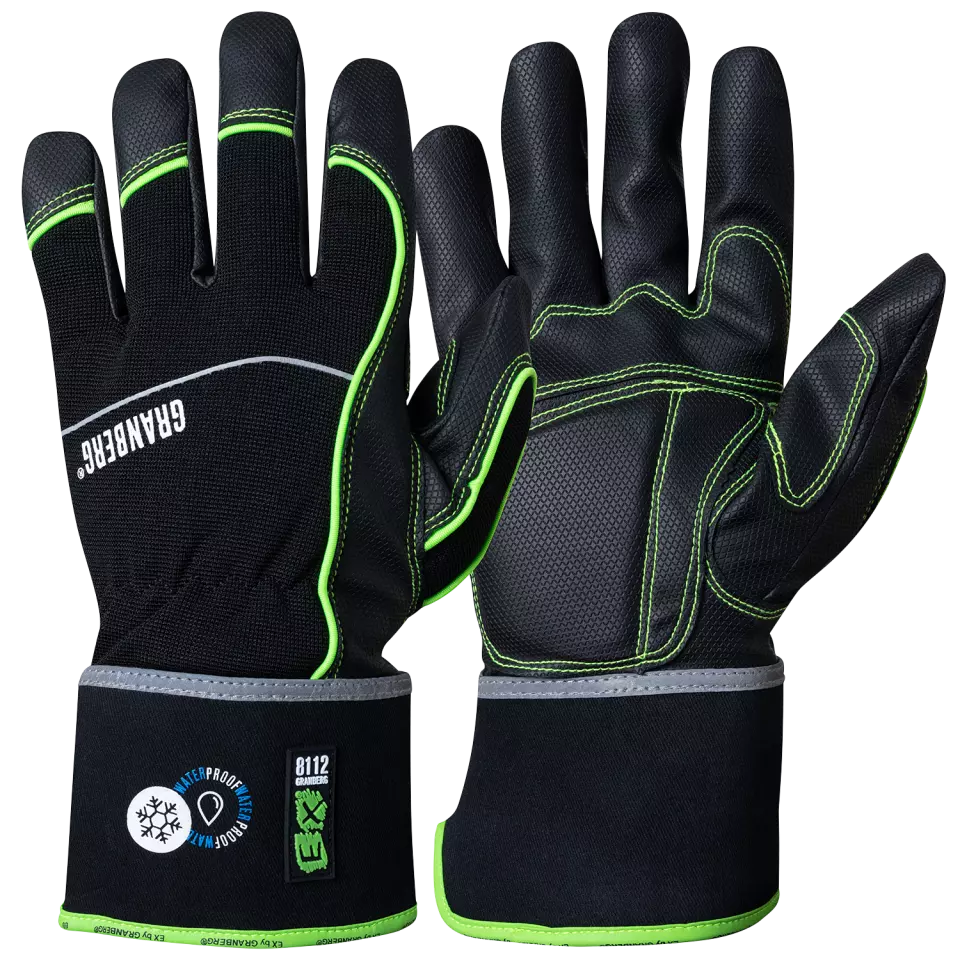These premium protective gloves combine advanced MicroSkin Shield® technology with a ProTex™ membrane for superior protection against cold and moisture while maintaining excellent flexibility and grip. The fully-lined construction features a warm, soft interior and strategic reinforcements at high-wear areas. Enhanced with reflective elements around the cuff, these gloves deliver professional-grade protection without compromising dexterity.
Product Features:
- MicroSkin Shield® material with ProTex™ membrane
- Spandex back for flexibility
- Warm and soft synthetic liner
- Palm and thumb-base reinforcement
- Reflective cuff elements
Technical Details:
- Fully lined construction
- Loose fit design
- Breathable and chromium-free
- Protection levels:
—Convective cold: Level 2
—Contact cold: Level 3
—Abrasion resistance: Level 2
—Circular blade cut resistance: Level 3
—Tear resistance: Level 2
—Puncture resistance: Level 2
Recommended Applications:
- Assembly work in cold environments
- Tasks requiring high mobility
- Suitable for both dry and wet conditions
Standards:
- CE Category II certified
- EN ISO 21420:2020 compliant
These premium protective gloves combine advanced MicroSkin Shield® technology with a ProTex™ membrane for superior protection against cold and moisture while maintaining excellent flexibility and grip. The fully-lined construction features a warm, soft interior and strategic reinforcements at high-wear areas. Enhanced with reflective elements around the cuff, these gloves deliver professional-grade protection without compromising dexterity.
Product Features:
- MicroSkin Shield® material with ProTex™ membrane
- Spandex back for flexibility
- Warm and soft synthetic liner
- Palm and thumb-base reinforcement
- Reflective cuff elements
Technical Details:
- Fully lined construction
- Loose fit design
- Breathable and chromium-free
- Protection levels:
—Convective cold: Level 2
—Contact cold: Level 3
—Abrasion resistance: Level 2
—Circular blade cut resistance: Level 3
—Tear resistance: Level 2
—Puncture resistance: Level 2
Recommended Applications:
- Assembly work in cold environments
- Tasks requiring high mobility
- Suitable for both dry and wet conditions
Standards:
- CE Category II certified
- EN ISO 21420:2020 compliant
These premium protective gloves combine advanced MicroSkin Shield® technology with a ProTex™ membrane for superior protection against cold and moisture while maintaining excellent flexibility and grip. The fully-lined construction features a warm, soft interior and strategic reinforcements at high-wear areas. Enhanced with reflective elements around the cuff, these gloves deliver professional-grade protection without compromising dexterity.
Product Features:
- MicroSkin Shield® material with ProTex™ membrane
- Spandex back for flexibility
- Warm and soft synthetic liner
- Palm and thumb-base reinforcement
- Reflective cuff elements
Technical Details:
- Fully lined construction
- Loose fit design
- Breathable and chromium-free
- Protection levels:
—Convective cold: Level 2
—Contact cold: Level 3
—Abrasion resistance: Level 2
—Circular blade cut resistance: Level 3
—Tear resistance: Level 2
—Puncture resistance: Level 2
Recommended Applications:
- Assembly work in cold environments
- Tasks requiring high mobility
- Suitable for both dry and wet conditions
Standards:
- CE Category II certified
- EN ISO 21420:2020 compliant


